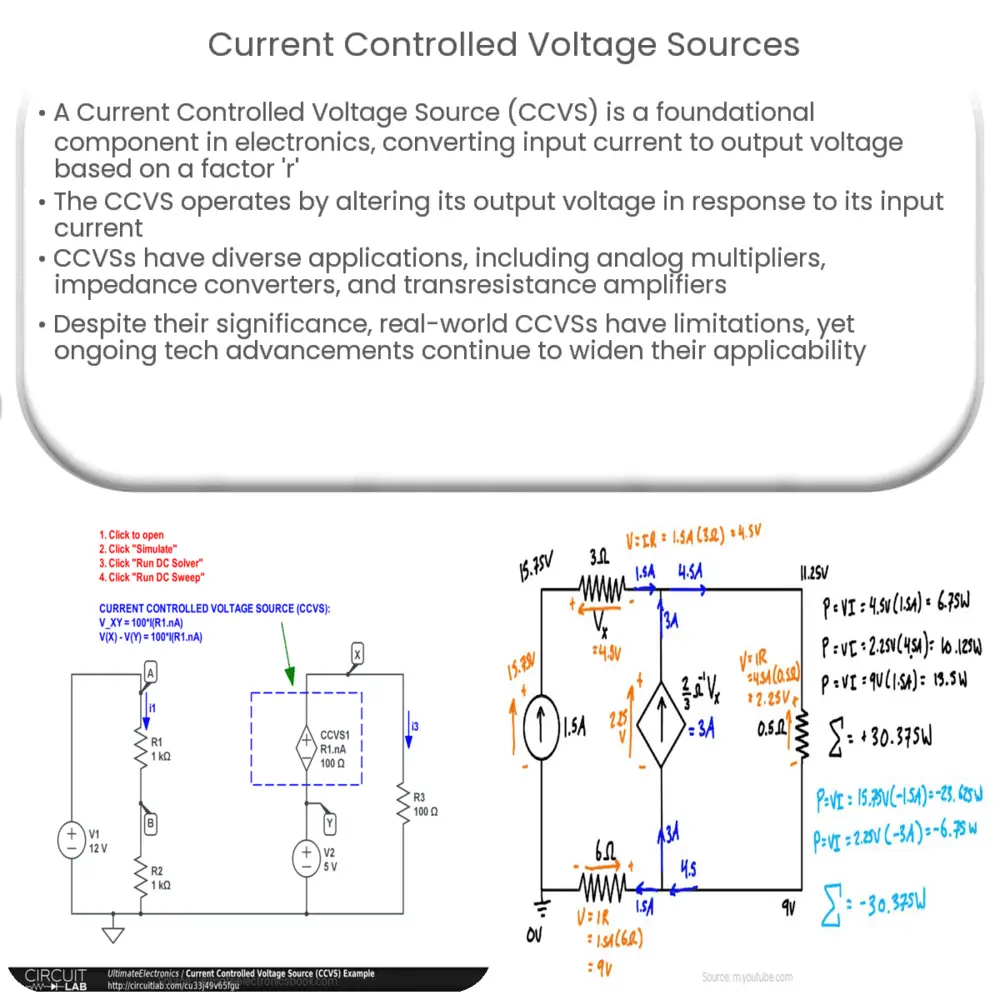Explore the fundamentals of Current Controlled Voltage Sources (CCVS), their applications, and implementation with transistors and Op-Amps.

Introduction to Current Controlled Voltage Sources
A Current Controlled Voltage Source (CCVS) is a fundamental component in electrical engineering and electronics. It’s an active two-port network, meaning that it has two pairs of terminals. The output voltage is a product of the input current and a factor, typically denoted as ‘r’. Thus, the output voltage can be expressed mathematically as V = r*Iin.
Basic Principle of CCVS
Understanding the basic principle of a CCVS can be an enlightening experience, as it is vital to the operation of many electronic systems. The CCVS operates on a rather straightforward principle: the voltage across its output terminals changes in response to the current passing through its input terminals. In other words, the output voltage is controlled by the input current.
- Input Terminals: Also known as the controlling or sensing pair, the input terminals are where the input current enters and leaves the CCVS.
- Output Terminals: Also referred to as the controlled or output pair, the output terminals are where the output voltage appears in response to the input current.
Applications of CCVS
CCVSs find wide applications in the design of electronic circuits. Some of the significant areas where they are used include:
- Analog Multipliers: An analog multiplier is a device that takes two analog signals and produces an output which is their product. CCVSs can be used in the design of these multipliers.
- Impedance Converters: CCVSs can be used in circuits that convert high impedance to low impedance and vice versa, helping to match impedances between different parts of an electronic system.
- Transresistance Amplifiers: Also known as current-to-voltage converters, transresistance amplifiers use CCVSs to convert a current signal into a proportional voltage signal.
Realization of CCVS
In real-world applications, CCVSs are often realized using transistors and operational amplifiers. In the next part of the article, we will delve deeper into how transistors and operational amplifiers are used to implement CCVSs in practical circuits, along with an overview of their operation and applications.
CCVS using Transistors
Transistors, whether Bipolar Junction Transistors (BJTs) or Field-Effect Transistors (FETs), can be used to implement a CCVS. In such configurations, the input current is applied at the base (for BJTs) or gate (for FETs), and the resulting output voltage is taken from the collector (for BJTs) or drain (for FETs).
CCVS using Operational Amplifiers
Operational Amplifiers (Op-Amps) are another common method of implementing CCVSs. One popular configuration uses a feedback resistor in parallel with the Op-Amp, a setup often referred to as a transimpedance amplifier. This configuration effectively converts an input current to an output voltage.
Understanding the Limitations
While CCVSs are incredibly useful, it’s important to understand their limitations. For instance, real-world CCVSs can deviate from the ideal due to non-linearity, noise, and limited bandwidth. Additionally, practical CCVSs may require careful impedance matching to ensure correct operation.
Future of CCVS
With advancements in semiconductor technology and electronic design automation tools, the application of CCVSs continues to grow. They are now being incorporated into complex integrated circuits, used in designing energy-efficient power supplies, and are fundamental in the advancement of communications technology.
Conclusion
In conclusion, a Current Controlled Voltage Source (CCVS) is an essential building block in many electronic circuits. Its ability to convert a current signal into a voltage signal based on a constant of proportionality ‘r’ enables it to find applications in a variety of systems, from analog multipliers to transresistance amplifiers. While practical implementations using transistors and operational amplifiers come with their own set of challenges, the ongoing developments in semiconductor technology promise to expand the utility and effectiveness of CCVSs in future electronic designs.




